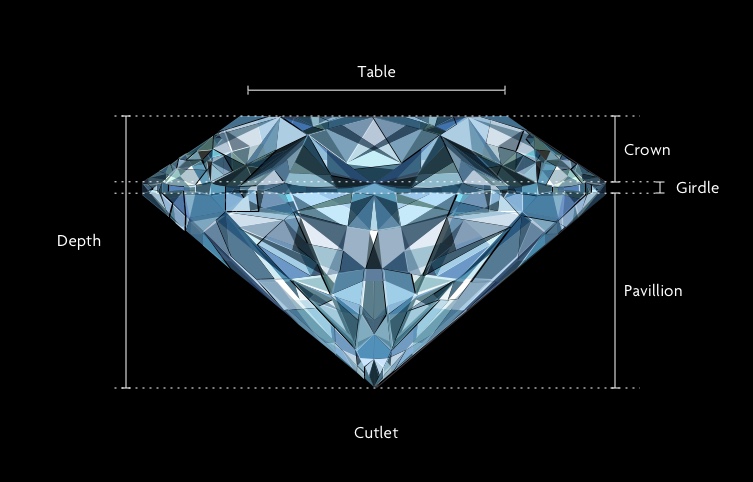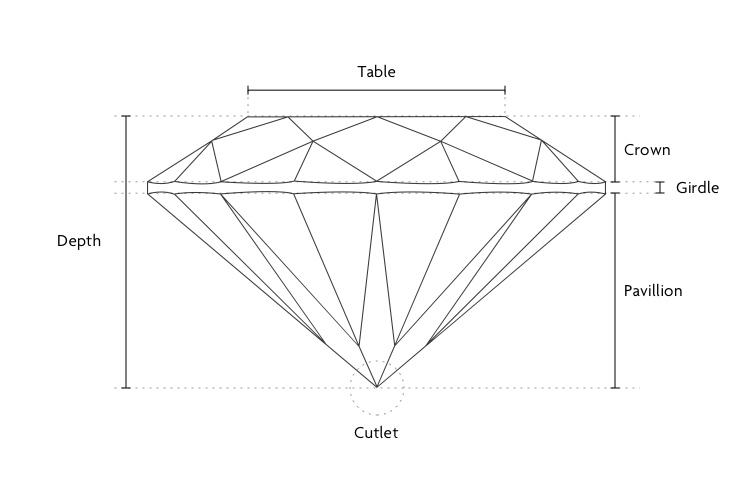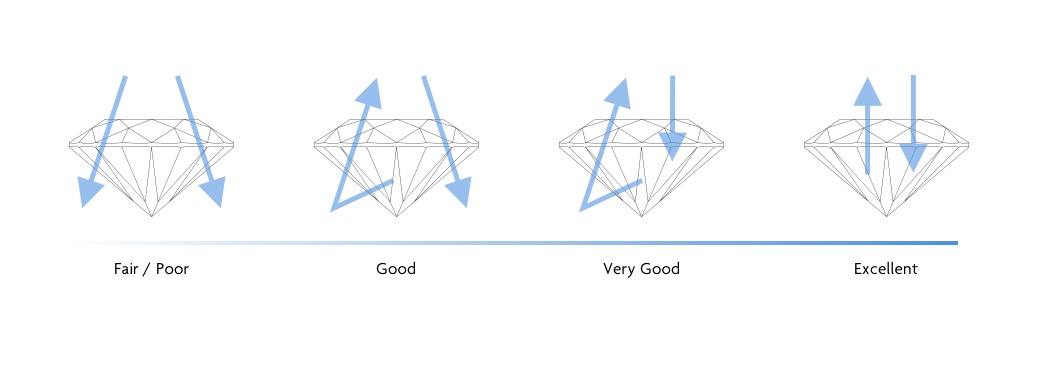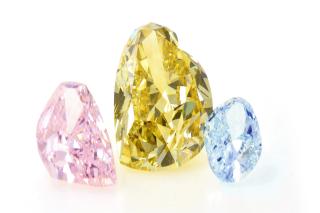Perhaps the most defining characteristic of any diamond is its cut. The way in which a diamond is cut determines not only its shape and size but also its ability to reflect light. In very simple terms, how much it will sparkle.
You probably know that there are several popular cuts to choose from, and which you choose is a matter of personal taste. What you may not realise is that the way in which a diamond is cut, no matter what shape it eventually takes, is just as important. If a diamond falls into the hands of an inexperienced cutter then, as we'll try to show you in this brief diamond cut guide, even the most precious stone will lose value.
Understanding the Parts of a Diamond
Before anyone can ever begin to learn how to cut a diamond, they must understand the parts that it is made up of:
Table and Table Percentage
The table of a diamond is the largest facet, made up of the flat surface that is created on top. The table percentage is a ratio measurement of the width of that top facet in relation to the width of the diamond as a whole. When the correct ratio s are used it creates a large amount of brilliance, allowing the stone to truly shine.
Crown
As its name suggest this crown like portion of a diamond sits below the table and just above the girdle (more on that later in this diamond cut guide) A diamond's crown can be cut either with brilliant cut facets or step cut facets. Both produce lots of fire and brilliance, so the choice between them is one of aesthetic preference.
Girdle
The girdle is the widest part of a diamond. It's the portion between the crown and the pavilion, and it runs the width of the stone from side to side. The measurement of the girdle represents the perimeter of the diamond. The girdle can be rough, polished, or faceted, and does not usually affect the quality or appearance of the stone.
Pavillion
The pavilion is integral to the stone's light reflecting properties. It lies at the bottom of the diamond, sometimes above what's known as a cutlet, sometimes alone. If a pavilion is cut too deep - or too shallow - light may escape from the bottom of the stone and it will not shine as brightly as it should.
Cutlet
Not every diamond has a cutlet. If it does it is a very small point at the bottom of the diamond. It was originally created to protect the diamond's pavilion, although today's settings are usually strong enough to make it unnecessary.
How Are Diamonds Cut?
You may have heard that only a diamond can cut a diamond, because they are so hard. In the 21st century that is only partially true. A laser can cut a diamond under certain circumstances but their uses are largely limited to the cleaving and bruting, which are the less precise parts of the cutting process. Usually, the tools used in the workshop consist of diamond-bladed edges or discs that are lined in diamond dust.
To become a diamond cutter an individual does usually need to go to school. There are a number of diamond cutting schools run by the large diamond merchants located all over the world and the process does take a few years.
How Can a Consumer Judge the Quality of a Diamond Cut?
One of the biggest questions you might have after reading this short diamond cut guide is how can you, as a consumer, tell if a diamond's cut is good?
The first is by checking its official cut grade. They range from Super Ideal - which is very rare and applies to a very small percentage of diamonds, to Fair. Foe consumers looking for a high quality diamond Ideal is an excellent choice, but anything from Ideal to Very Good will shine beautifully.
The second way to determine the quality of a diamond's cut is more fun; see it for yourself. examine the stone under several different types of lighting, including indoors and natural light. Move the diamond around to see how it sparkles when the light hits it. If you like what you see that really is what matters most!









